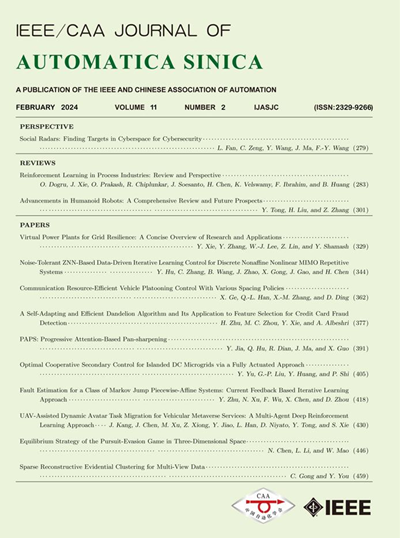Constraints Separation Based Evolutionary Multitasking for Constrained Multi-Objective Optimization Problems
IF 15.3
1区 计算机科学
Q1 AUTOMATION & CONTROL SYSTEMS
引用次数: 0
Abstract
Constrained multi-objective optimization problems (CMOPs) generally contain multiple constraints, which not only form multiple discrete feasible regions but also reduce the size of optimal feasible regions, thus they propose serious challenges for solvers. Among all constraints, some constraints are highly correlated with optimal feasible regions; thus they can provide effective help to find feasible Pareto front. However, most of the existing constrained multi-objective evolutionary algorithms tackle constraints by regarding all constraints as a whole or directly ignoring all constraints, and do not consider judging the relations among constraints and do not utilize the information from promising single constraints. Therefore, this paper attempts to identify promising single constraints and utilize them to help solve CMOPs. To be specific, a CMOP is transformed into a multi-tasking optimization problem, where multiple auxiliary tasks are created to search for the Pareto fronts that only consider a single constraint respectively. Besides, an auxiliary task priority method is designed to identify and retain some high-related auxiliary tasks according to the information of relative positions and dominance relationships. Moreover, an improved tentative method is designed to find and transfer useful knowledge among tasks. Experimental results on three benchmark test suites and 11 real-world problems with different numbers of constraints show better or competitive performance of the proposed method when compared with eight state-of-the-art peer methods.基于约束分离的进化多任务处理,用于受约束的多目标优化问题
约束多目标优化问题(CMOPs)通常包含多个约束条件,这些约束条件不仅会形成多个离散的可行区域,还会减小最优可行区域的大小,因此对求解者提出了严峻的挑战。在所有约束条件中,有些约束条件与最优可行区域高度相关,因此能有效帮助求解者找到可行的帕累托前沿。然而,现有的约束条件多目标进化算法在处理约束条件时,大多将所有约束条件视为一个整体或直接忽略所有约束条件,不考虑判断约束条件之间的关系,也不利用有希望的单个约束条件的信息。因此,本文试图找出有希望的单个约束条件,并利用它们来帮助求解 CMOP。具体而言,将 CMOP 转化为多任务优化问题,创建多个辅助任务,分别搜索只考虑单一约束条件的帕累托前沿。此外,还设计了一种辅助任务优先级方法,根据相对位置和支配关系信息,识别并保留一些关联度高的辅助任务。此外,还设计了一种改进的暂定方法,用于发现和转移任务间的有用知识。在三个基准测试套件和 11 个具有不同数量约束条件的实际问题上的实验结果表明,与八个最先进的同行方法相比,所提出的方法具有更好或更有竞争力的性能。
本文章由计算机程序翻译,如有差异,请以英文原文为准。
求助全文
约1分钟内获得全文
求助全文
来源期刊

Ieee-Caa Journal of Automatica Sinica
Engineering-Control and Systems Engineering
CiteScore
23.50
自引率
11.00%
发文量
880
期刊介绍:
The IEEE/CAA Journal of Automatica Sinica is a reputable journal that publishes high-quality papers in English on original theoretical/experimental research and development in the field of automation. The journal covers a wide range of topics including automatic control, artificial intelligence and intelligent control, systems theory and engineering, pattern recognition and intelligent systems, automation engineering and applications, information processing and information systems, network-based automation, robotics, sensing and measurement, and navigation, guidance, and control.
Additionally, the journal is abstracted/indexed in several prominent databases including SCIE (Science Citation Index Expanded), EI (Engineering Index), Inspec, Scopus, SCImago, DBLP, CNKI (China National Knowledge Infrastructure), CSCD (Chinese Science Citation Database), and IEEE Xplore.
 求助内容:
求助内容: 应助结果提醒方式:
应助结果提醒方式:


